Felice Casorati (Novara, 1883-Turin, 1963) was one of the most important artists of the twentieth century in Italy, and one of the longest-lived of his era, having gone through the avant-garde period, the return to order, the period of fascism up to the postwar period. He first approached Symbolism, with an eye open to international scenes (he was particularly fascinated by the Viennese Secession of the various Gustav Klimt, Oskar Kokoschka and colleagues), but he also looked to Cézanne, and was always very close to the leading critics and collectors of his time (from Piero Gobetti to Lionello Venturi, from Antonio Casella to Riccardo Gualino). In particular, the artist struck up a fruitful friendship with Riccardo Gualino, who commissioned works from him (including the decoration of his private little theater) and caused him to develop an interest in the applied arts.
A multifaceted artist, he participated several times in the Venice Biennale, had a prolific graphic activity and was not only a painter but also a sculptor, architect, set designer and, as mentioned, developed interests in the applied and decorative arts, a field in which he had the opportunity to express himself, for example, with mosaics for the VI Milan Triennale and for the Gualino home theater itself. A painter highly appreciated even today by the market, of Casorati the general public knows above all the art of the 1920s, when Casorati was included in the trends of the return to order, along with artists such as Carlo Carrà, Arturo Martini, and Massimo Campigli (Casorati, in particular, matured a neo-Renaissance style, the one most often associated with him by the public and enthusiasts).
Difficult to pigeonhole into a precise current, he is nevertheless repeatedly associated with magic realism: By this expression is meant a mode of expression typical of 1920s Italy that, having rejected the Futurist and Expressionist avant-gardes, is based on realistic images that are presented, however, with a rendering that is “icy, terse, often investigated in the most minute details, so realistic as to inevitably prove disturbing and alienating,” as Gabriella Belli and Valerio Terraroli, curators of the exhibition Magic Realism held at the Palazzo Reale in Milan from October 19, 2021 to February 27, 2022, wrote. Casorati was one of the most original and modern representatives of this trend that would characterize Italian art roughly from 1920 to 1935, and he is therefore regarded as one of the leading Italian artists of the period.

Felice Casorati was born in Novara on December 4, 1883, to Francesco, a military man (officer on permanent duty) and Caterina Borgarelli. Because of his father’s occupation, the family moved frequently. In 1895 the Casorati family settled in Padua, where Felice completed his studies, graduating in 1906 with a degree in law: however, despite being set on a career in law, he matured a strong passion for the arts, particularly music, but he also dabbled as a painter, so much so that in 1907 he tried to send some works to the VII Venice Biennale, including a Portrait of his sister Elvira (now in a private collection), which was accepted (in fact, critics were convinced that they were dealing with a very promising young man: Casorati was only twenty-four years old at the time). Between 1908 and 1911 he moved to Naples, but found himself ill, and in 1911 he moved to Verona, where he founded the magazine La via Lattea, for which he also executed illustrations in the art nouveau style. In 1912 he participated in the 11th Venice Biennale, and in 1913 he was among the artists taking part in the Ca’ Pesaro exhibition: in the rooms of the Venetian institute, Casorati exhibited no less than 41 works (Ca’ Pesaro would become so important to him that it led him to turn down an invitation to the Biennale in 1920 to continue exhibiting precisely at Ca’ Pesaro). In 1915 he exhibited at the Roman Secession, after which he was called to serve in the army during World War I. After the death of his father in 1917, his mother and sisters moved to Vercelli, and Felice also returned to Piedmont, where he met Piero Gobetti and Riccardo Gualino. Instead, it was in 1920 that he met, at the Venice Biennale, the art of Paul Cézanne, to whose study Felice devoted himself passionately. In 1923, having by then become one of the most prominent artists in Italy, he exhibited at the Quadriennale in Rome and in 1924 even obtained a solo show, curated by Lionello Venturi, while in 1925 he founded, together with Alberto Sartoris, Annibale Rigotti and Mario Sombrero, the “Antonio Fontanesi” Fine Arts Society, of which he was also president.
In the 1920s, after deepening his acquaintance with Riccardo Gualino, he obtained from the latter the commission for the decorations of the private little theater in his house, despite his inexperience in decorative arts. The little theater would be inaugurated in 1925, although it would remain active only until 1930 (moreover, curiously, in the same years Casorati also worked as a set designer: an activity that would occupy him for a long time, so much so that the artist would also work for the Teatro Civico in Turin). In 1930 he married English painter Daphne Maugham, and on July 2, 1934, their son Francesco was born. He became an artist of European renown and began to rack up several successes: the Carnegie Prize in Pittsburgh in 1937, the City of Venice Prize at the 1938 Biennale, the Grand Prix in Paris in 1939, and in the same year the Painting Prize at the San Francisco International Art Exhibition. Again, in 1941 he became the holder of the Chair of Painting at the Accademia Albertina in Turin, and of the same institute he would become director in 1952, and in the same year he got another solo exhibition at the Venice Biennale, while (another curiosity) in 1955 he worked for Fiat, painting a painting for the launch of the new Fiat 600. In 1960 his sister Elvira died, and in 1961 his health deteriorated, and due to an embolism his left leg was amputated, but he did not stop painting and, indeed, in 1962 he was present at the XXXI Venice Biennale with seventeen works. The artist passed away in Turin on March 1, 1963.

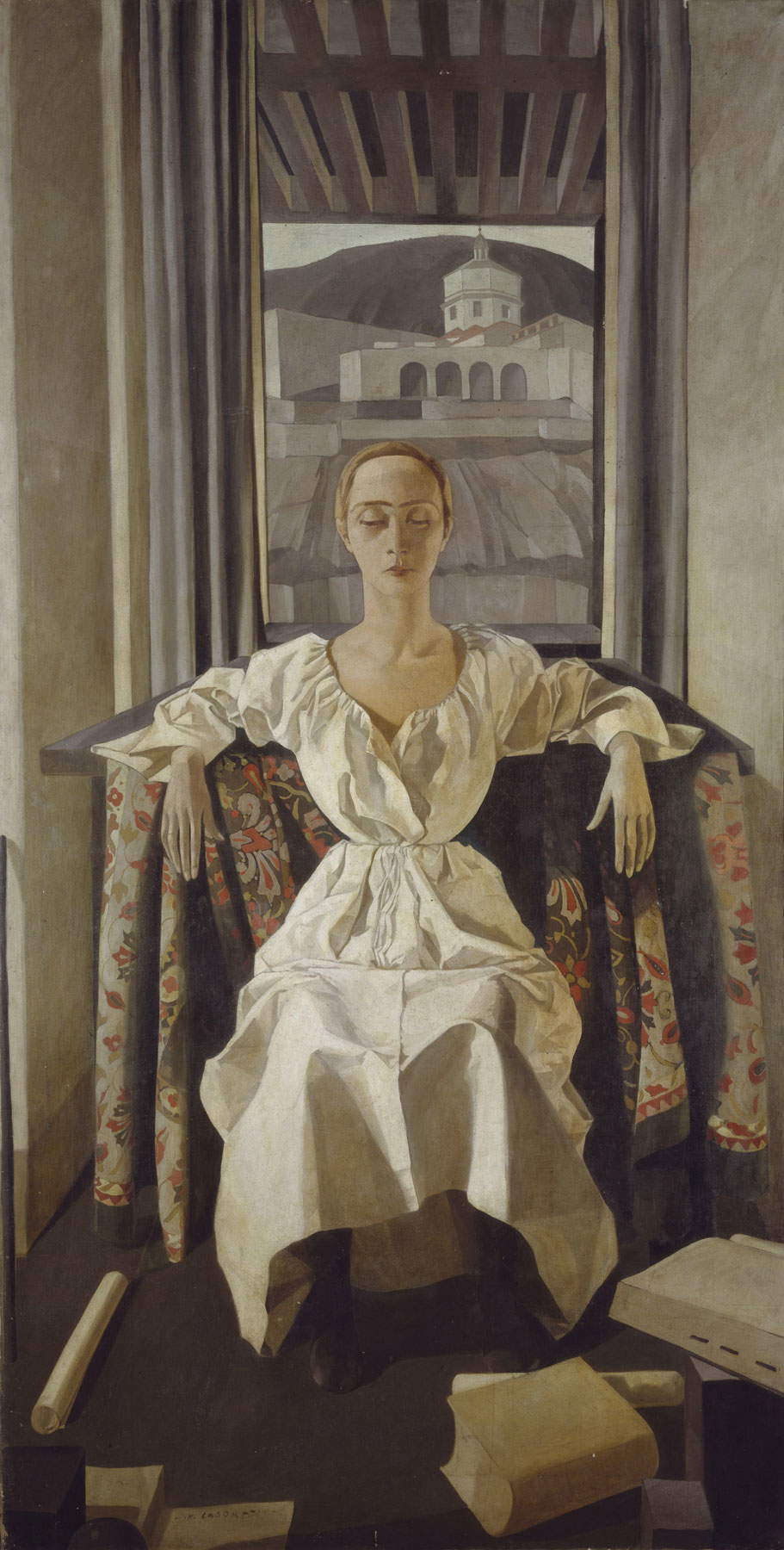
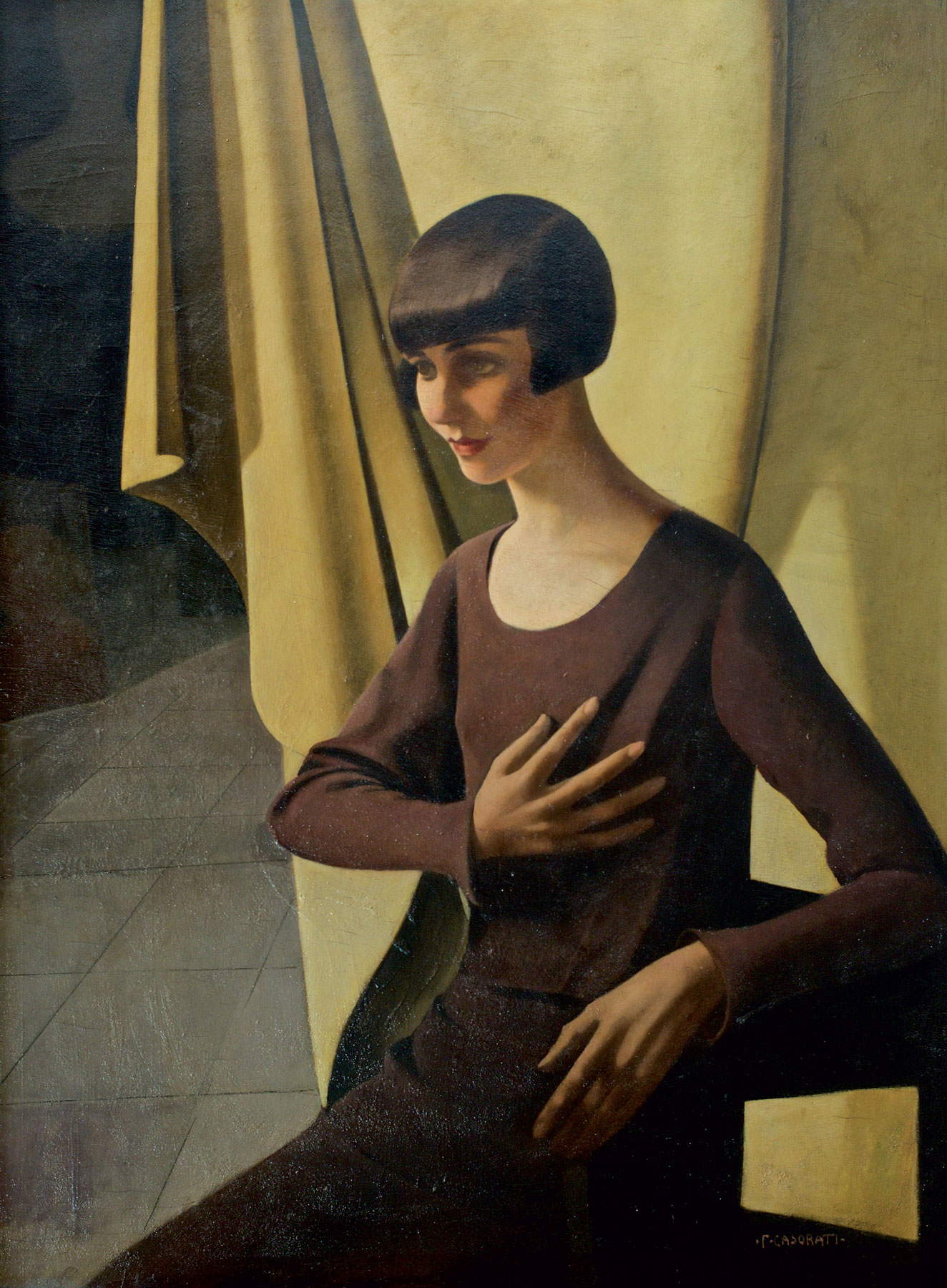

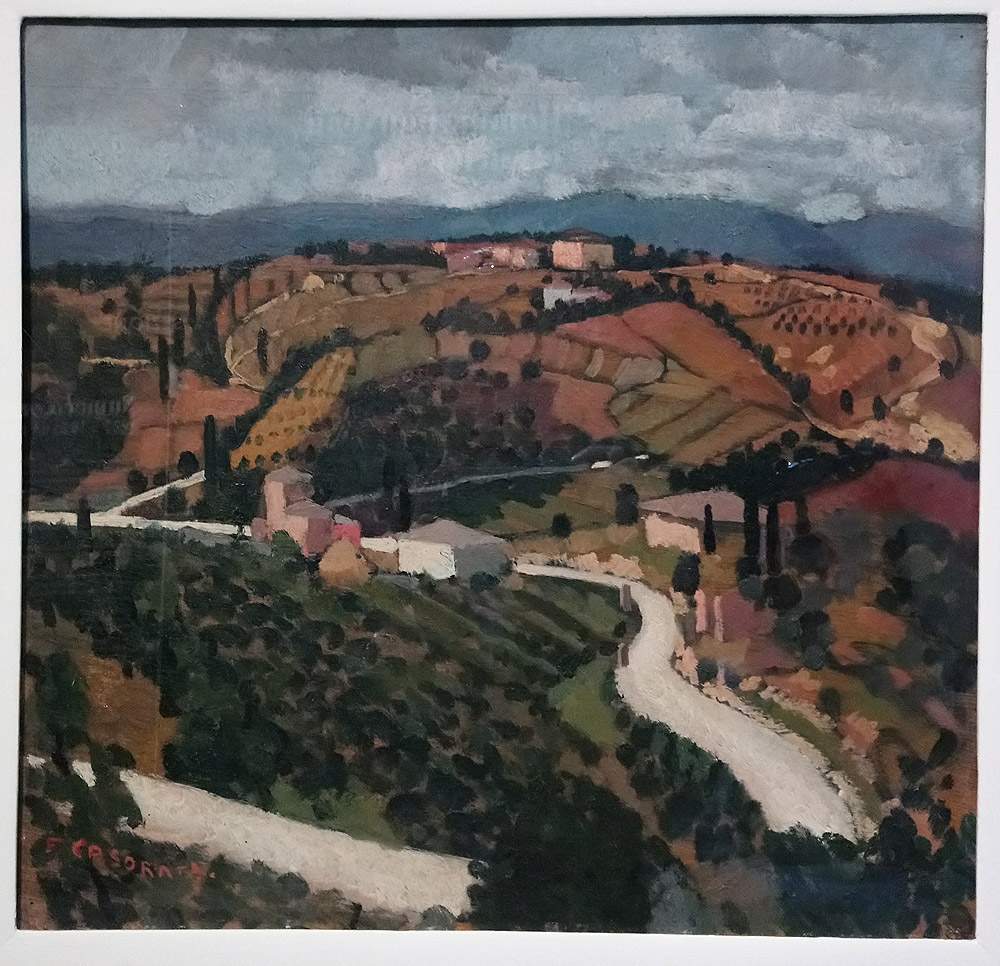
“Endowed with an unmistakable personality,” wrote Giuseppe Marchiori in the painter’s life included in the Dizionario biografico degli italiani, “Casorati did not allow himself to be involved in the avant-garde movements of his time-Fauvism, Expressionism, Cubism, Futurism-and yet he knew how to draw from them the lifeblood to infuse a spirit of modernity into his works, which were set on a classic intellectual rigor.” After a beginning devoted to an art that fused the instances of expressionism with the linearism typical of the Art Nouveau style (see, for example, the Old Lady at the GAM in Turin), when not almost entirely marked byart nouveau(Fa come natura face in foco of 1917, with obvious debts to the Viennese Secession), Casorati in the early postwar period took up themes from Renaissance art, looking above all to the art of Piero della Francesca to produce a neo-Renaissance painting whose protagonists are almost solemn, immobile figures, often depicted in frontal poses, within cold, strictly geometric compositions (one of his masterpieces from this phase is the 1922 Portrait of Silvana Cenni, considered one of the peaks of his production). Casorati also distinguished himself in this phase as a very skilled portraitist: of note are, among others, the Portrait of Engineer Beria of 1924-1925 and the famous Portrait of Hena Rigotti of 1924, both preserved at the GAM in Turin, or Cynthia in a private collection, and the very famous Portrait of Renato Gualino of 1924.
Also of neo-Renaissance inspiration is the Concerto of 1924, a singular composition in which the protagonist is a group of nudes caught in the most varied poses, just as a theory of nudes animates the Meriggio of 1923 kept at the Revoltella Museum in Trieste: these are scenes always set in cold, suspended atmospheres, with settings always rigorously calibrated, a strong linearism also mindful of Renaissance art and even with quotations from ancient art (in the Meriggio the female nude that appears on the right is taken from Andrea Mantegna’s Dead Christ ). Even in the 1930s, Casorati would continue to present to the public, collectors and critics works animated by the same neo-fourteenth-century classicism, with little variety of themes: portraits, still lifes, nudes, masks. Regarding the static nature that characterized his compositions, Casorati would say, “I adore static forms; and since my painting is born from within and never finds its origin in the changing ’impression,’ it is quite natural that these static forms, and not the moving images of passion, should be found in my figures.”
After the season of magic realism and the 1920s, Casorati’s painting began to more insistently embrace elements inferred from European art, beginning with that of Cézanne (see, for example, Woman and Landscape of 1940 preserved in Macerata, at Palazzo Ricci, or again the Ragazza di Pavarolo at the GAM in Turin, a work of 1937 set, the scholar Riccardo Passoni has written, on a “deliberately intimist address where earthy colors and dull tones prevail”). Forms in this period become more elementary, the geometrization that had already characterized Casorati’s production in the 1920s goes so far as to make landscape elements resemble pure geometric shapes, a tendency that would continue in the painting of the 1950s (as in Lemons at the Galleria d’Arte Moderna in Palazzo Pitti in 1950, with the chromatic range now extremely reduced, the colors spread in uniform backgrounds, the shapes enclosed within a thick black outline: it is one of the best known of his enigmatic still lifes from the last phase of his career).
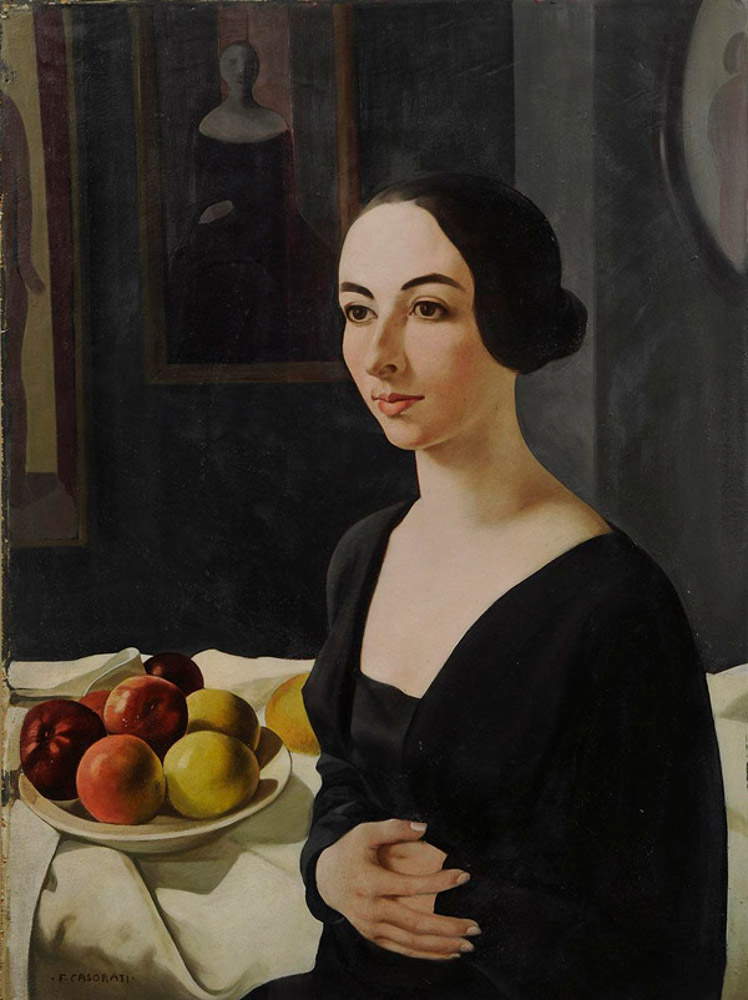
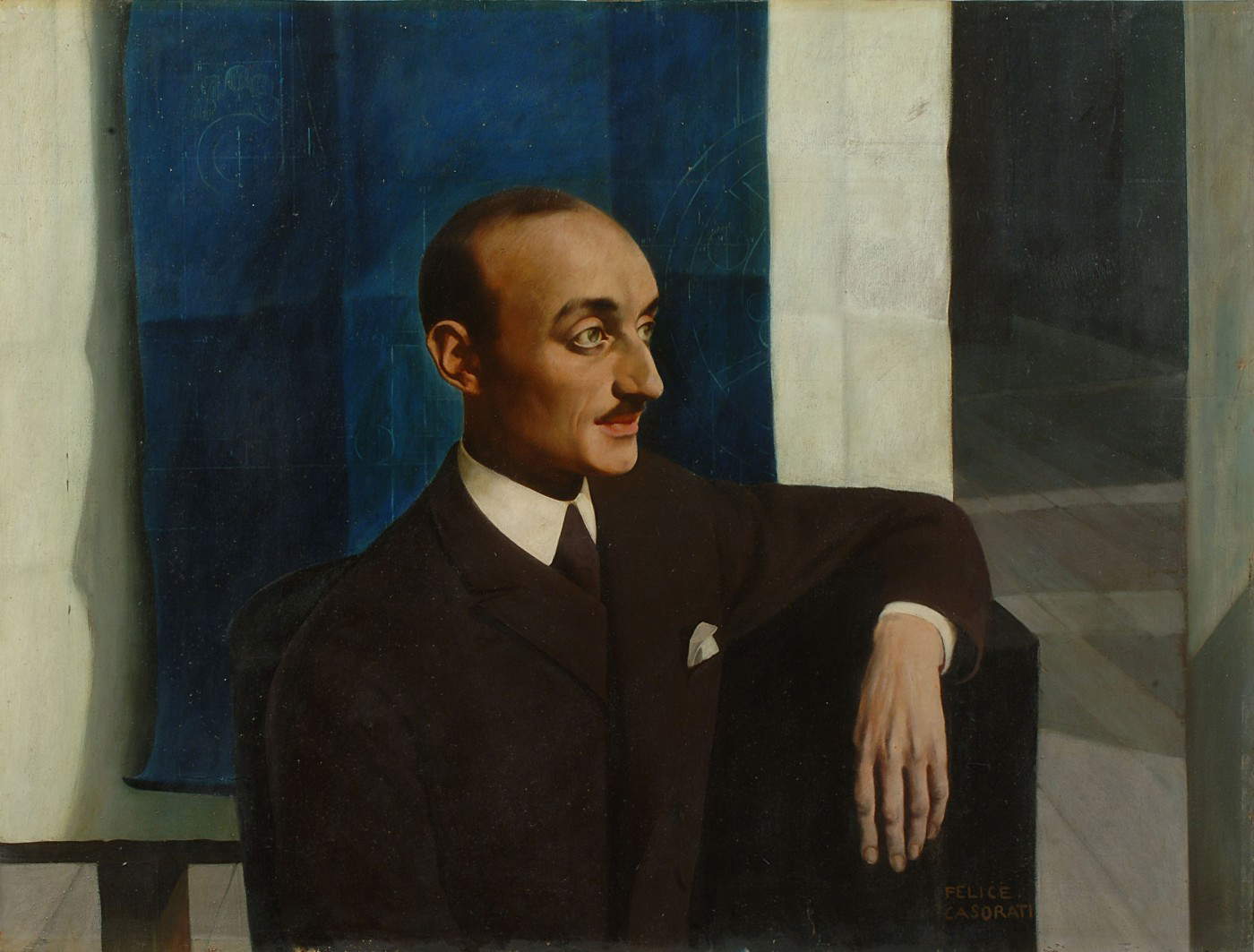

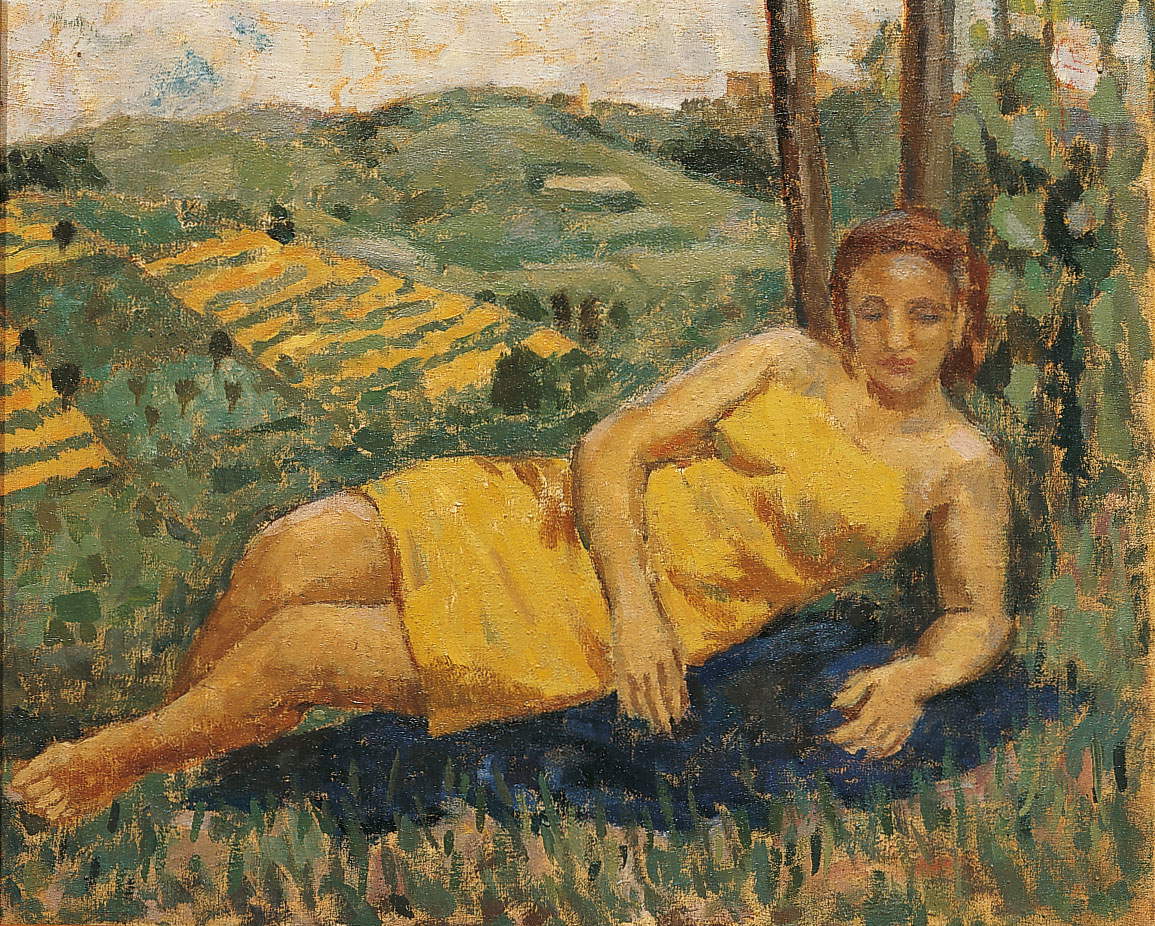
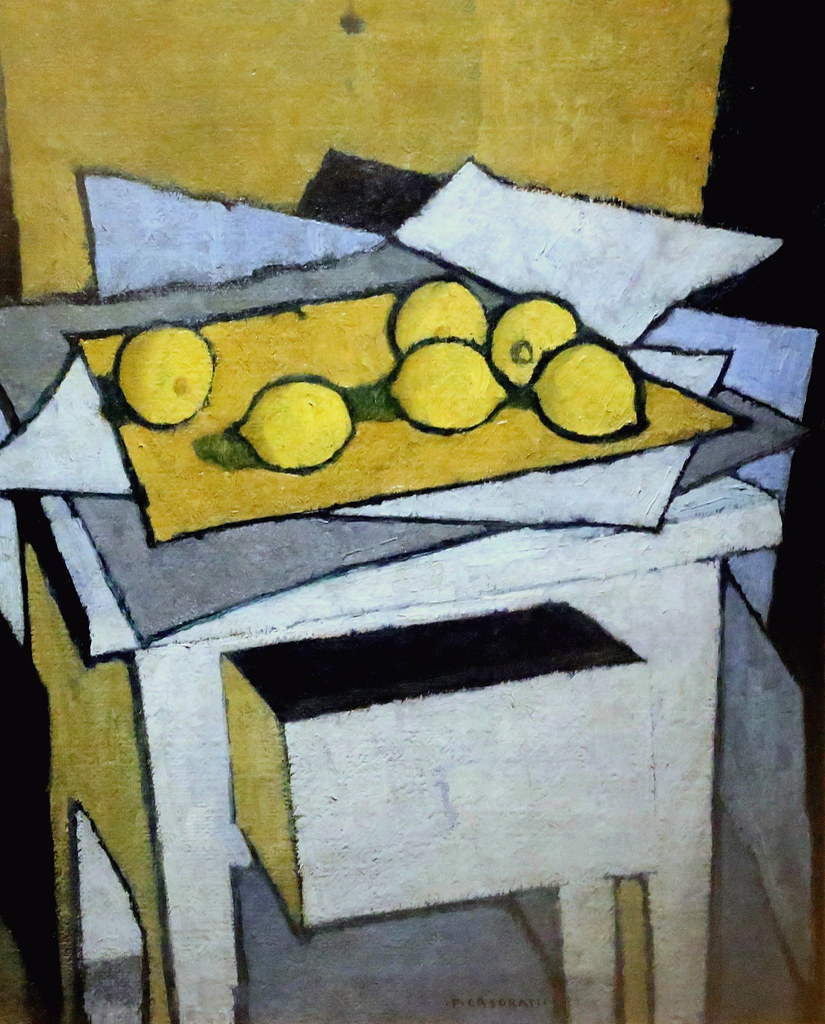
The main core of Felice Casorati’s paintings is at the Gallery of Modern Art (GAM) in Turin, the city where the painter had his studio and where he lived the longest. Works by Casorati can be found, however, in several Italian museums that have substantial collections of 19th- and 20th-century art: the Museo del Novecento in Milan, the Galleria Ricci Oddi in Piacenza, the Museo MAGI ’900 in Pieve di Cento, the Museo d’Arte della Città in Ravenna, the Musei Civici in Genoa, the Galleria d’Arte Moderna in Palazzo Pitti in Florence, the Galleria d’Arte Moderna Achille Forti in Verona, the Museo Novecento in Florence, and the Mart in Rovereto are just some of the museums where Casorati’s works can be seen.
In addition, in Pavarolo, a village in Piedmont where the residence in which Casorati spent his summer stays starting in 1931 is located, a “Casorati Studio-Museum” was created in 2016, at the behest of the heirs and the municipal administration, which is opened periodically and where thematic exhibitions on the great painter are organized. Finally, since Casorati was an artist who was always highly appreciated by the market (he still is), he is also a painter who is very present in private collections, and furthermore his graphic works (but also several of his paintings) are in the availability of several antiquarians, which is why he is a very present artist in art fairs that have in-depth studies on twentieth-century art. Several anthological and retrospective exhibitions have also been dedicated to him, as he is an artist much loved by the public.
 |
| Felice Casorati, life and works of the great painter of Magic Realism |
Warning: the translation into English of the original Italian article was created using automatic tools. We undertake to review all articles, but we do not guarantee the total absence of inaccuracies in the translation due to the program. You can find the original by clicking on the ITA button. If you find any mistake,please contact us.